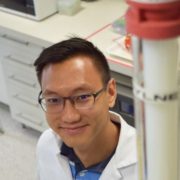
Samuel Nonis: The Plant Cell First Author
The Plant Cell: Author Profiles
Samuel Nonis, first author of Structural and biochemical analyses of concanavalin A circular permutation by jack bean asparaginyl endopeptidase
Current Position: PhD thesis under examination and looking for my first post-doc position
Education: PhD student in Biochemistry/Structural Biology, Honours…

Shuxiao Zhang: Plant Direct First Author
Plant Direct, Plant Direct: Author Profiles
Shuxiao (Susan) Zhang, first author of Root vacuolar sequestration and suberization are prominent responses of Pistacia spp. rootstocks during salinity stress
Current Position: PhD student in the Plant Biology Graduate Program at University of California Davis
Education: BS in plant biology,…
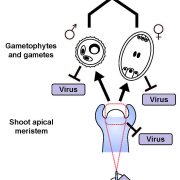
Review. Under siege: virus control in plant meristems and progeny (Plant Cell)
Plant Science Research WeeklyPerhaps, when our lives have been turned upside down by a human pathogenic virus, it’s easy to overlook the fact that plants too suffer from viral infections; but of course, they do. (And of course, famously, viruses were first discovered in plants). Although it is difficult to cure a plant of a virus…

Review: Functional packaging of seeds (New Phytol.)
Plant Science Research WeeklyIn this review, Huss and Gierlinger describe the different anatomical features that shape sclerenchyma function in hard seed encapsulations. Hard encapsulations are classified as static (non-deforming at the macroscopic level) or responsive (deforming in response to environmental changes), depending…
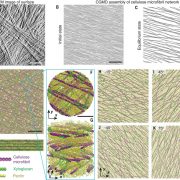
Molecular insights into the complex mechanics of plant epidermal cell walls (Science)
Plant Science Research WeeklyPrimary plant cell walls are made up of three types of polysaccharides: cellulose, hemicellulose, and pectin, the orientations and interactions of which provide the cell wall with its properties. Here, Zhang et al. examined the outer wall of onion epidermal cells through atomic-force microscopy, stress-strain…

Stretched by Stress: PIEZO1 is a mechanosensitive ion channel in Arabidopsis (PNAS)
Plant Science Research WeeklyPlants are constantly susceptible to mechanical stress and they have evolved intracellular signaling mechanisms to adapt to mechanical stimulation. Whilst it is known that ion channels activate signaling pathways in response to mechanical stress, only few of these mechanosensitive channels have been…
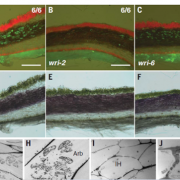
Give and Take: Lipid exchanges drove the evolution of mutualism during plant terrestrialization (Science)
Plant Science Research WeeklyPlants form symbiotic associations with a variety of microbial partners, among which arbuscular mycorrhizal fungi (AMF) are prominent. AMF are known to enrich plants with a host of vital nutrients including the essential macronutrient phosphorus. While the finer details of plant-AMF association are known…
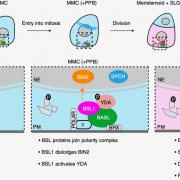
A spatiotemporal molecular switch governs plant asymmetric cell division (Nature Plants)
Plant Science Research WeeklyIn multicellular organisms, stem cells produce various cell types through asymmetric cell division (ACD), which is achieved is through polarization of cell-fate determinant proteins in the ACD progenitor cells. In Arabidopsis stomatal development, an ACD progenitor cell, the meristemoid mother cell (MMC),…
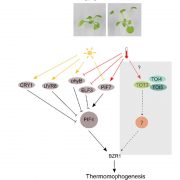
A TOTally new pathway regulating thermomorphogenesis (Nature Comms)
Plant Science Research WeeklyIncrease in ambient temperature often causes remarkable changes in the shape and organization of plant body, including elongation of hypocotyl and petioles, early flowering, and reduction in stomatal index, collectively known as thermomorphogenesis. Virtually all the molecular pathways that are known…

